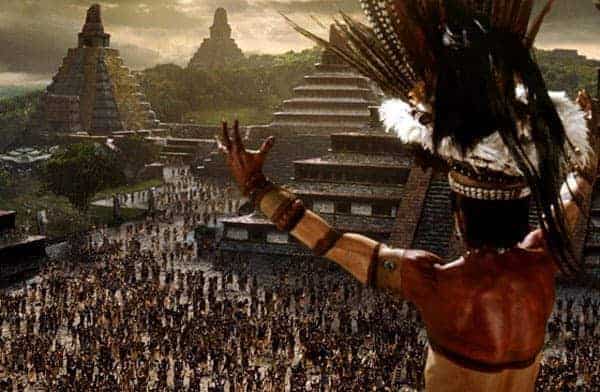The Maya civilization was one of the most advanced in Mesoamerica and survived for approximately 3,500 years before falling victim to the Spanish conquest in the 16th century. It developed in southern Mexico and modern-day Central American nations such as Guatemala, Belize, El Salvador, and Honduras. Mesoamerica was one of the six cradles of civilization and helped create cultural advances such as the development of complex societies, agriculture, cities, and architecture.
While the first settled villages and agricultural achievements occurred during the Archaic Period from 8,000-2,000 BC, the Maya civilization began to grow and flourish at some point in the Early Preclassic Period, which began after 2,000 BC. In this article, I will look through the four periods of Maya civilization which saw the growth of a remarkable society that finally fell thousands of years later to Spanish conquistadors.

1 – Preclassic Period (2000 BC – 250 AD)
There is still some debate as to when Maya civilization began. Carbon dating suggests there was Mayan occupation in modern-day Belize in around 2,600 BC, but the first known settlements took place in 1,800 BC near the Pacific Coast in northern Guatemala. San Bartolo is one of the oldest sites, and at this early stage, the Maya were already growing crops such as beans, maize, chili pepper and squash. The Maya also created pottery in an era where sedentary communities were the norm.
The Middle Preclassic Period dates from 1,000 BC to 1 BC, and during this timeframe, the Maya started to create cities which was a departure from the small villages that were a hallmark of the Early Preclassic Period. They moved from the coast and up through river valleys before eventually penetrating the inner areas of the regions they settled in.
As well as growing in size, Mayan society became more complex with the establishment of an ‘elite’ class. So-called ‘prestige’ goods such as jade mosaics appeared, and it was a period of extensive trading with other peoples including the Olmecs. The Maya included central plazas and earth mounds in the villages and cities which suggest the development of a hierarchical and religious structure. At La Blanca, archaeologists discovered a 75-foot high mound. The city of Kaminaljuyu was one of the most important cities in the Middle Preclassic era and was one of the biggest Mayan settlements by 500 BC.
The Late Preclassic Period began in approximately 400 BC and is known for the rapidly rising population of Mayan settlements, an increased centralization of political power and a heightened interest in the military and warfare. The growing population meant the Maya had to create complex mechanisms for coordinating, feeding, and organizing people.
It was also an era of monument building as the Maya constructed a series of temples such as the one at Tikal. Suddenly and seemingly mysteriously, there was a mass decline and abandonment of important Preclassic cities such as El Mirador from 100 AD onwards. One theory suggests that the eruption of the Ilopango Volcano near San Salvador devastated thousands of square miles and rendered everywhere within a 60-mile radius uninhabitable. While there is no clear evidence that this is the case, it is an intriguing theory given what happened to Pompeii and Herculaneum in 79 AD.

